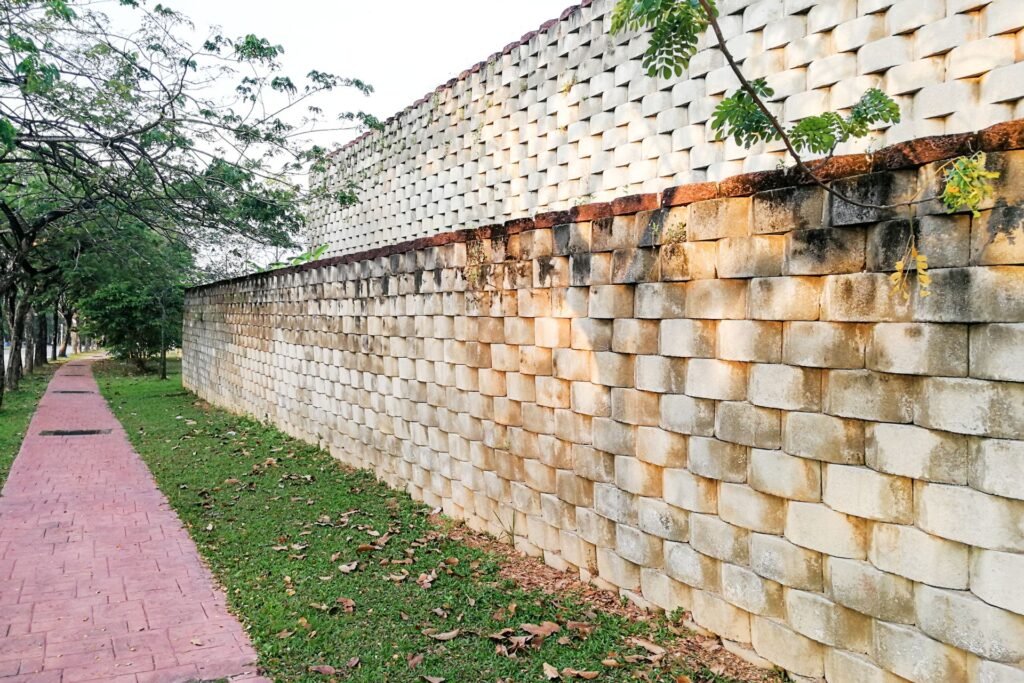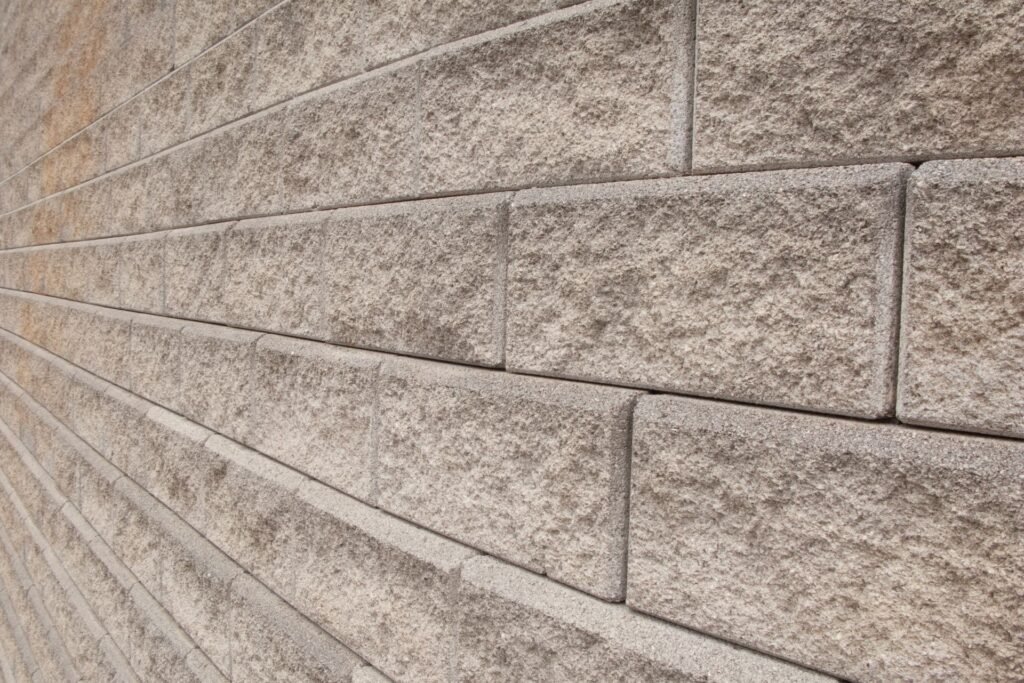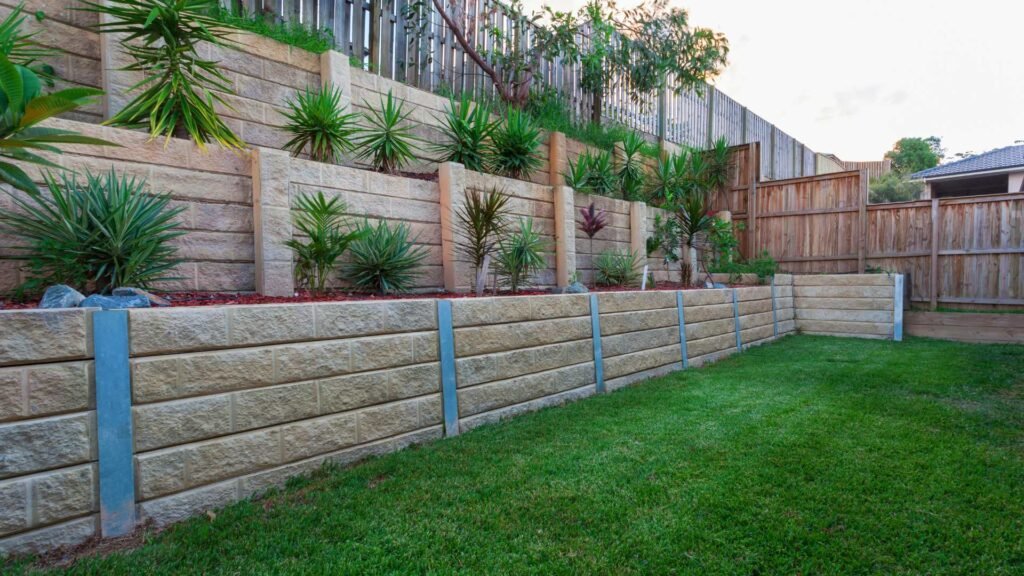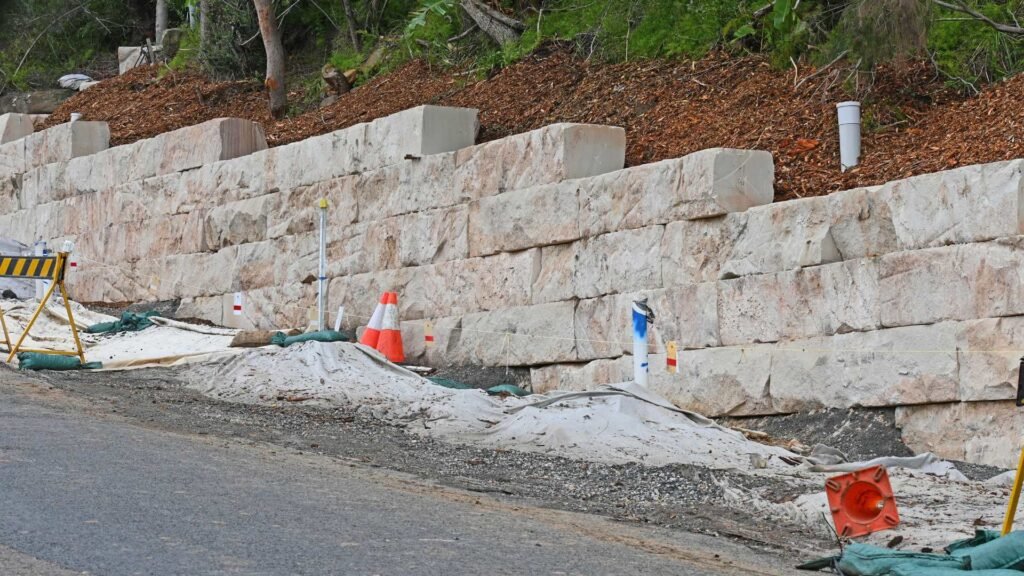Welcome to our comprehensive guide on retaining wall regulations in Australia! Whether you’re considering a new landscaping project or tackling erosion issues on your property, building a retaining wall involves more than just picking the right materials and design. It’s essential to understand the legal requirements and safety standards that govern these structures to avoid costly mistakes or potential hazards. From council approvals to specific height restrictions, navigating the rules can seem daunting. But don’t worry — we’re here to break it all down for you in a clear and straightforward way, ensuring your retaining wall is not only functional but fully compliant with Australian regulations.
In Australia, retaining wall regulations vary by state, but council approval is typically required for walls exceeding 600mm in height or when the structure is near a boundary. Regulations are in place to ensure safety, proper drainage, and structural integrity. It’s essential to check local council guidelines before starting any construction to avoid fines or the need to modify non-compliant walls.
- What Is A Retaining Wall And Why Are Regulations Important?
- National Regulations Vs. State/Territory Differences
- When Do You Need Council Approval For A Retaining Wall?
- Building And Design Considerations
- Common Pitfalls To Avoid
- How To Apply For Retaining Wall Approval
- Costs Involved With Retaining Wall Permits And Construction
- Case Studies: Retaining Wall Failures And Successes
- FAQs: About Retaining Wall Regulations Australia
- Conclusion
What Is A Retaining Wall And Why Are Regulations Important?
Retaining walls are a crucial element in both residential and commercial landscapes, yet their function and the regulations surrounding them are not widely understood by everyone. This guide aims to demystify retaining walls, explaining their definition, uses, and why stringent regulations are essential for their construction, especially in places like Australia.
What is a Retaining Wall?
A retaining wall is a structure designed to restrain soil to a slope that it would not naturally keep to (i.e., it holds back soil). These walls are vital in areas where extra support is needed to prevent the earth from moving downhill with erosion. The most common examples where retaining walls are used include landscapes that require level surfaces for construction or gardening purposes, like building a terrace on a slope or preventing soil from washing away.
Retaining walls can be made from various materials including concrete, stone, wood, and even recycled plastic. The choice of material often depends on the wall’s intended height, the nature of the soil, and aesthetic considerations.
Purpose of Regulations
In Australia, like in many parts of the world, the construction of retaining walls is regulated. This is not just a bureaucratic step but a measure aimed at ensuring safety, minimizing environmental impact, and adhering to legal obligations.
- Safety Concerns: The primary reason for regulating retaining walls is safety. Improperly built retaining walls can fail, leading to dangerous collapses that could harm people or damage property. For example, a wall holding back a significant amount of earth can give way under pressure if not constructed correctly.
- Environmental Impact: Retaining walls can significantly affect the local environment. They alter water flow and can impact local ecosystems. Regulations help ensure that these structures do not cause harmful soil erosion or unwanted water runoff that could affect other properties or natural habitats.
- Legal Obligations: Legally, there are liabilities associated with the construction and maintenance of retaining walls. Regulations ensure that these structures are built to a standard that minimizes risk and liability for homeowners and builders alike.
Example of Regulatory Importance
Consider the consequences of a poorly constructed retaining wall: it might not only collapse but also lead to issues like severe drainage problems, which can further erode the soil and destabilize other structures. Through regulations, builders must follow specific guidelines that ensure the retaining wall is robust, functional, and harmonious with its surrounding environment.
Retaining walls are more than just aesthetic features; they play a critical role in ensuring geological and structural stability. Understanding the retaining wall definition and why retaining walls are regulated is crucial for anyone involved in construction or landscaping in hilly areas. The regulations in place help safeguard personal and public safety, protect the environment, and ensure that the structures built are beneficial and durable. Always consult with a professional and adhere to local guidelines when planning to construct a retaining wall to avoid the possible retaining wall safety risks.
By demystifying the complexities surrounding retaining walls and emphasizing the importance of adhering to regulations, we hope to enhance both awareness and safety in their construction and maintenance.

National Regulations Vs. State/Territory Differences
When planning to construct a retaining wall in Australia, it’s crucial to understand the diverse landscape of regulations that govern this process. Both national standards and state-specific rules play significant roles in ensuring the safety and efficacy of these structures. This article provides a comprehensive guide on the national and state/territory regulations affecting retaining wall construction across Australia.
The National Building Code and Retaining Walls
The backbone of Australian construction regulations is the National Construction Code (NCC), which sets the minimum required standards for the design, construction, and performance of buildings and other structures, including retaining walls. The NCC ensures that structures are safe, healthy, and sustainable, accommodating climatic and geographic variations across the country.
For retaining walls, the NCC specifies criteria regarding materials, design loads, and other structural integrity measures. It’s designed to ensure that all construction activities, regardless of where they are in Australia, meet a standard baseline of safety and quality. Compliance with the NCC is mandatory nationwide, making it the first checkpoint for anyone looking to construct a retaining wall.
State and Territory-Specific Regulations
While the NCC provides a unified framework, each Australian state and territory can specify additional requirements that address local environmental factors, soil types, and other regional considerations. Here’s how retaining wall regulations can vary across different regions:
- New South Wales: In NSW, any retaining wall exceeding 600mm in height typically requires council approval. This is especially relevant in areas with specific landscape or environmental considerations.
- Queensland: Queensland often requires engineering plans and a certified builder to construct retaining walls over 1 meter high, or those supporting a surcharge load.
- Victoria: Victorian regulations focus on the impact of retaining walls on water runoff and their effects on neighboring properties. Council approval is necessary for walls above 1 meter.
- Western Australia: WA has stringent requirements for retaining walls that impact natural water drainage paths. Local council guidelines frequently address these aspects.
- South Australia: In SA, walls over 600mm high near boundaries or significant structures require approval, with emphasis on the walls’ potential effects on soil displacement.
- Tasmania: Tasmanian regulations require a building permit for most retaining walls, especially those in hazardous areas or of significant height.
- Northern Territory: The NT mandates that retaining walls capable of influencing natural water flow or that are over 600mm in height obtain approvals.
- Australian Capital Territory: In the ACT, retaining walls that are over 600mm high or are near property boundaries need to comply with both the NCC and specific local codes.
Practical Examples of Regulatory Differences
To illustrate, consider the example of a homeowner in Queensland and another in Victoria who both plan to build a retaining wall. In Queensland, if the wall is over 1 meter high, it not only requires a building permit but must also be constructed under the guidance of a certified engineer. Conversely, in Victoria, the same wall might also need a permit due to its height, but additional scrutiny will be given to how the wall affects drainage and neighboring properties.
These examples highlight the importance of consulting local council or territory regulations in addition to adhering to the NCC. Understanding these nuances can ensure compliance, prevent legal issues, and guarantee that the retaining wall is built to last, effectively managing the soil it retains.
Constructing a retaining wall in Australia requires careful consideration of both national and state-specific regulations. By familiarizing oneself with the National Construction Code and the unique requirements of the state or territory where the construction is to take place, builders and homeowners can ensure their retaining walls are safe, compliant, and functional. Always consider consulting with professionals who are well-versed in local laws to navigate the complexities of building codes effectively.

When Do You Need Council Approval For A Retaining Wall?
Building a retaining wall can significantly impact the layout and safety of your property, but understanding when you need council approval is crucial to ensure your construction complies with local regulations. This guide explores the scenarios requiring council approval, particularly focusing on aspects such as wall height, structural integrity, and proximity to property boundaries.
General Guidelines for Council Approval
Retaining walls serve a critical role in managing soil erosion and supporting land structures, making their construction subject to scrutiny under local building codes. The need for council approval generally hinges on several factors:
- Wall Height: Retaining walls below a certain height may not require council approval. For instance, in many Australian states, retaining walls that are under 600mm in height typically do not need approval. However, this can vary significantly between different councils and states, so it’s paramount to verify local regulations before beginning construction.
- Load-Bearing Capacity: If a retaining wall is expected to bear significant loads or hold back substantial amounts of soil, council approval is likely necessary to ensure that the structure is safe and capable of handling the expected pressure.
- Proximity to Boundaries: Walls built close to property boundaries or public spaces may also require approval, as they can affect neighboring properties and community infrastructure.
Height Restrictions Across Australian States
Height restrictions can vary, prompting a need for council approval:
- New South Wales: Generally, retaining walls over 600mm require council approval, especially if they are near a boundary or support a surcharge.
- Victoria: Similar regulations apply, with walls over 1 meter typically requiring a building permit and possibly an engineer’s report.
- Queensland: Retaining walls over 1 meter or those within 1.5 meters of a building or other structure usually need approval.
These examples highlight the importance of checking specific state rules and engaging with local council authorities to ensure compliance with all relevant regulations.
Structural Integrity and Professional Input
For retaining walls that could impact the structural integrity of your property or its surroundings, professional input is often essential:
- Engineer’s Certification: For walls above certain heights or in complex geological settings, an engineer’s certification may be required. This ensures the wall’s design is adequate to prevent failure.
- Professional Advice: Consulting with a professional can provide insights into the best materials and construction techniques for your retaining wall, helping to avoid costly mistakes and ensuring the wall functions as intended.
Before starting your retaining wall project, it’s advisable to consult with your local council and possibly a structural engineer. Whether it’s due to the height, location, or potential risk factors associated with your wall, obtaining the necessary permits can safeguard against legal issues and ensure your wall is built to last.
Remember, the regulations can be intricate and may vary widely, so always make local enquiries. By adhering to the guidelines and seeking appropriate professional advice, you can achieve a retaining wall that is both functional and compliant.

Building And Design Considerations
When designing and constructing a retaining wall, there are several crucial aspects to consider that impact both the integrity of the structure and its compliance with local building regulations. From the materials used to the location of the wall relative to property boundaries, each decision carries implications for both the functionality of the wall and legal adherence. Here’s a detailed exploration of these considerations:
Material Choices and Their Impact on Regulations
The choice of material for building a retaining wall isn’t just a matter of aesthetics or cost— it significantly affects regulatory compliance. Common materials like timber, concrete, and stone each come with their own set of regulations that guide their use:
- Timber is often chosen for its natural appearance and relative ease of use. However, timber walls require specific treatments and preservatives to prevent decay and ensure longevity, which can be mandated by local safety standards.
- Concrete offers great strength and durability, making it a popular choice for retaining walls. Concrete walls need to adhere to regulations concerning their reinforcement to prevent failure under soil pressure.
- Stone provides a traditional and robust option for retaining walls but may require specific construction techniques to meet stability standards mandated by local codes.
In each case, it’s important to consult with local building codes and possibly a structural engineer to ensure that the material choice complies with all necessary regulations regarding safety and environmental impact.
Drainage and Soil Considerations
Drainage is a pivotal aspect of retaining wall design that directly influences both its effectiveness and regulatory compliance. Improper drainage can lead to water build-up behind the wall, creating hydrostatic pressure that significantly increases the risk of wall failure. This scenario underscores the necessity of incorporating a well-planned drainage system, such as weep holes or drainage tiles, which is often required by building regulations. For instance, many local codes require a detailed drainage plan to prevent water accumulation and the subsequent pressure it causes.
In addition to water management, soil type also plays a critical role in the design of a retaining wall. Soil analysis should be conducted to determine the appropriate type of wall construction—whether it be gravity, cantilevered, or anchored, depending on the soil’s ability to bear stress.
Boundaries and Neighboring Properties
Building a retaining wall near property lines brings additional regulatory and interpersonal considerations. Most regions have specific guidelines on how close a retaining wall can be to a property boundary. These regulations are in place to avoid disputes between neighbors and to ensure that each property remains safe and unaffected by construction projects. For example, building too close to a neighbor’s property might necessitate additional reinforcements or changes in wall design to prevent soil or water from affecting adjoining land.
Additionally, it’s good practice to engage in open communication with neighboring property owners before construction begins to address any concerns and avoid potential legal disputes. This can include discussions about the wall’s appearance, potential impacts during construction, and any long-term effects on their property.
Understanding and integrating these building and design considerations are crucial for the successful and lawful construction of a retaining wall. Whether dealing with material choices, drainage and soil stability, or the proximity to neighboring properties, each factor must be carefully analyzed to ensure that the wall is both functional and compliant with local regulations. By paying close attention to these details, you can enhance the safety, functionality, and aesthetics of your retaining wall, making it a valuable addition to your property.

Common Pitfalls To Avoid
Building a retaining wall can be an effective solution for managing soil erosion and enhancing landscaping. However, this construction project is not without its challenges. Many enthusiastic DIYers and even seasoned builders fall into traps that can lead to increased costs, legal issues, or even structural failure. To ensure your retaining wall stands solid and compliant, here are key pitfalls to avoid:
Ignoring Local Regulations
One of the most critical steps in any construction project is understanding and adhering to local building codes and regulations. These rules are in place to ensure safety, environmental protection, and community standards. Skipping this step might seem like a time-saver, but the consequences can be severe.
For instance, consider the scenario of building a retaining wall without the necessary permits. While this may expedite your initial construction phase, the lack of legal approval can lead to hefty fines. More distressingly, if the wall fails to meet safety standards, it may need to be dismantled. This not only doubles your work but also significantly increases your costs. Always start your project with the right permits and approvals to avoid legal headaches and ensure your construction is up to standard.
Underestimating Drainage Needs
Adequate drainage is a cornerstone of retaining wall design. Water buildup behind the wall can lead to hydrostatic pressure, which is a leading cause of wall failure. This oversight not only compromises the structural integrity of the wall but can also become a legal liability if the wall damages property or injures someone.
To prevent such issues, incorporate proper drainage solutions, such as installing drainage pipes and using gravel backfill, during the construction of your retaining wall. These measures help control the flow of water and reduce pressure on the wall, extending its lifespan and functionality.
Overlooking Professional Advice
While many retaining walls can be a DIY project, larger or more complex builds should always involve professional input. Consulting with a structural engineer or an experienced contractor can provide insights that are not obvious to the untrained eye. These professionals can help you choose the right materials, design, and safety features for your retaining wall.
Moreover, professional advice is invaluable in navigating the more intricate aspects of retaining wall construction, such as soil analysis and load-bearing calculations. Their expertise ensures that your wall will not only be aesthetically pleasing but also structurally sound and compliant with all local codes.
Building a retaining wall involves much more than simply stacking blocks. By being aware of these common pitfalls—ignoring local regulations, underestimating drainage needs, and overlooking professional advice—you can avoid the typical mistakes that could turn your project into a costly and unsafe endeavor. Always plan carefully, respect the guidelines, and seek expert opinions when necessary. With the right approach, your retaining wall will be a durable and legal addition to your property.

How To Apply For Retaining Wall Approval
When planning to construct a retaining wall on your property, securing the proper approvals is crucial to ensure compliance with local regulations and to guarantee safety. Here’s a detailed guide to navigating the approval process for a retaining wall in Australia, tailored to help you understand each step clearly and efficiently.
Step-by-Step Guide to the Approval Process
1. Checking Local Council Requirements
Each local council may have different requirements based on the height, material, and location of the retaining wall. It’s essential to start by visiting your local council’s website or contacting them directly to gather all necessary information. This step ensures that you are aware of specific restrictions, allowable materials, and whether your wall will need special considerations due to its location (e.g., near public utilities or on a boundary line).
2. Submitting Design Plans
Design plans are crucial as they provide a detailed blueprint of the retaining wall. These should include dimensions, materials, and the proposed location. The design must also consider any potential impact on neighboring properties. Hiring a professional to draft these plans can increase the likelihood of approval as they will be up to professional standards and specifications.
3. Getting Engineering Certification (If Required)
For retaining walls above a certain height—typically around 800mm or those retaining significant loads—an engineering certification might be necessary. This involves a structural engineer assessing your design plans to ensure they are structurally sound and fit for purpose. This certification is a critical safety requirement and serves as reassurance that the wall will be built to withstand environmental and load-bearing factors.
4. Estimated Timeframes and Costs
Understanding the timeframe for approval and the associated costs is vital for project planning. Timeframes can vary significantly between councils and might be influenced by the complexity of your application. Costs can include council application fees, costs for drafting design plans, and engineering certification fees. It’s advisable to budget for potential unforeseen expenses as well.
What to Include in Your Application
A comprehensive application should include several key documents:
- Site Plan: Illustrates the location of the retaining wall on your property.
- Soil Reports: These are sometimes required to assess the suitability of the soil for the intended structure.
- Drainage Plans: Important especially if the wall could affect natural water flow on your property or adjacent areas.
These documents help the council assess the feasibility and safety of your proposed retaining wall.
Online Resources and Contacting Local Authorities
For those looking for specific guidelines and submission portals, most Australian states offer online resources:
- New South Wales: NSW Planning Portal
- Victoria: VIC Planning Portal
- Queensland: QLD Government Planning
- Western Australia: WA Planning Commission
- South Australia: SA Planning Portal
These links provide direct access to the necessary resources for each respective state. Additionally, you can directly contact your local council for more tailored advice and guidance through their contact points listed on their websites.
Securing retaining wall approval may seem daunting, but with the right preparation and understanding of the required steps, you can ensure a smoother process. By following these guidelines and preparing thoroughly, you’ll be well on your way to enhancing your property with a new, compliant retaining wall.

Costs Involved With Retaining Wall Permits And Construction
Building a retaining wall is more than just an aesthetic or functional addition to your property; it’s a significant construction project that involves understanding local regulations and budgeting for various expenses. Below, we delve into the key costs associated with retaining wall permits and construction to help you plan effectively.
Permit Costs
The cost of obtaining a permit for constructing a retaining wall varies widely depending on several factors, including your location (state and municipality), the size and type of wall, and the specific local building codes. In general, you might expect to pay anywhere from $50 to several hundred dollars for a permit. For instance, in states with stringent environmental protections and building codes, such as California or New York, permit costs might be on the higher end. Conversely, in states with less regulatory oversight, the costs could be lower. It’s crucial to check with your local building department for an accurate estimation.
Additional Costs
Beyond the permit, several other costs must be considered:
- Professional Fees: Most locations require that a certified engineer or surveyor approve your retaining wall plans to ensure stability and compliance with local codes. The fees for these professionals can vary significantly based on the complexity of the wall and the rates in your area. You might spend anywhere from $500 to $2,000 or more on these services.
- Materials: The choice of material can greatly influence the overall cost of your retaining wall. Common materials include concrete blocks, poured concrete, treated timbers, or stones. The prices for these materials can range widely, from $10 to $40 per square foot, depending on the material quality and availability in your region.
- Construction Labor: Labor costs also vary by location, the complexity of the construction, and the length of time required to complete the project. For a standard retaining wall, labor can cost between $20 to $50 per square foot. This price could increase with the complexity of the design or if specialized machinery is required.
Cost vs. Risk
Opting to skip the permit process or ignoring local construction codes might seem like a cost-saving measure initially, but it can lead to substantial financial risks. Without proper permits and adherence to codes, you risk fines that can run into thousands of dollars. Moreover, improperly constructed walls pose safety hazards and may fail, necessitating expensive repairs. These repairs not only include rebuilding the failed sections of the wall but also addressing any damage caused to surrounding properties or landscaping.
In conclusion, while the upfront costs of permits, professional inspections, and quality materials may seem high, they are crucial investments that ensure the safety, legality, and durability of your retaining wall. Planning your project with these costs in mind will help you avoid legal issues and potential future expenses, making your retaining wall a valuable addition to your property. Remember, always consult local experts and comply with all regulations to ensure that your retaining wall project is successful and compliant.

Case Studies: Retaining Wall Failures And Successes
Retaining walls serve a vital function in landscaping and architectural design, but they also present significant challenges if not constructed properly. In this article, we delve into two contrasting case studies of retaining wall projects — one that highlights the ramifications of neglecting safety regulations, and another that showcases the benefits of adherence to guidelines.
Real-Life Example of a Retaining Wall Failure
In a well-documented incident, a large retaining wall collapsed in a residential area shortly after construction. The failure occurred due to poor planning and a disregard for local building codes, which resulted in inadequate structural support and the use of substandard materials. The wall, intended to support a hillside and prevent soil erosion, instead gave way during a heavy rainstorm, causing significant damage to adjacent properties and leading to costly litigation.
This situation underscores the importance of following established building codes and regulations. These guidelines are not merely bureaucratic hurdles; they are crucial safety measures designed to ensure that structures can withstand environmental stresses and protect the public. The financial and safety implications of this failure serve as a stark reminder of the risks associated with cutting corners in construction projects.
Success Story: A Sydney Suburb Example
Contrasting the previous example, let’s examine a success story from a Sydney suburb, where a homeowner’s foresight to seek professional advice made all the difference. Initially perceived as a straightforward project, the homeowner planned to erect a retaining wall to enhance their garden’s aesthetics and functionality. Before proceeding, they consulted with an engineer and adhered strictly to local building codes.
The professional input transformed the project. The engineer recommended specific materials and construction techniques that would ensure the wall’s longevity and stability. Thanks to the homeowner’s commitment to regulatory compliance, the completed retaining wall not only enhanced the property’s visual appeal but also significantly increased its market value. Most importantly, the structure has proven to be durable and safe, effectively preventing soil erosion and withstanding various weather conditions.
Key Takeaways
These case studies illustrate the profound impact that adherence to, or disregard of, regulations can have on retaining wall projects. Here are a few key takeaways for homeowners and builders:
- Regulatory Compliance: Always consult local building codes and consider hiring a professional engineer when planning a retaining wall. This step is crucial for safety and legality.
- Quality Materials: Invest in high-quality materials that are appropriate for your specific environmental conditions and wall purposes. Quality materials contribute directly to the wall’s durability and safety.
- Professional Guidance: Even seemingly simple projects can benefit from professional advice. Engineers can provide insights that significantly enhance the effectiveness and safety of the construction.
By examining both a failure and a success, we gain a clearer understanding of the potential risks and rewards associated with retaining wall projects. Proper planning, adherence to regulations, and professional involvement are key factors in ensuring the success and safety of such undertakings

FAQs: About Retaining Wall Regulations Australia
Retaining wall regulations in Australia are rules set by local councils and the National Construction Code (NCC) to ensure the safety, structural integrity, and proper drainage of retaining walls. These regulations vary by state and may include requirements for height limits, proximity to boundaries, and the need for council approval or engineering certification.
In most Australian states, council approval is required if the retaining wall exceeds a certain height, typically around 600mm to 1 meter, or if it’s close to a property boundary. Local councils may also require approval if the wall will affect drainage, support a load, or be built on sloping land. Always check with your local council before beginning construction.
The maximum height of a retaining wall without council approval varies by state, but it’s commonly around 600mm (0.6 meters). For walls higher than this, or for complex projects involving soil retention or drainage, you will likely need to obtain a permit or seek professional advice.
No, retaining wall regulations differ between Australian states and territories. Each state has its own specific guidelines regarding height limits, boundary setbacks, and permit requirements. It’s important to consult your local council or a licensed contractor familiar with your state’s rules before starting a project.
You may need a structural engineer’s input for your retaining wall project, especially if the wall exceeds height limits set by your local council, supports significant loads, or is built on unstable or sloped terrain. Engineers can ensure the wall’s design meets safety and regulatory standards.
Building a retaining wall without proper council approval can lead to several consequences, including fines, legal action, or being forced to remove or modify the structure. Non-compliance can also create safety hazards, which might result in accidents or property damage.
Proper drainage is critical for retaining walls to prevent water build-up behind the structure, which can lead to wall failure. Many local councils require a drainage plan as part of the retaining wall permit process, and inadequate drainage can cause both structural and legal problems.
Building a retaining wall on or near your property boundary is subject to strict regulations in Australia. In most cases, you’ll need to consult with your local council, and possibly obtain permission from your neighbor, to ensure that the wall won’t negatively impact adjoining properties.
You can build retaining walls from various materials, such as timber, concrete, stone, or masonry. While the material itself isn’t usually regulated, some materials may require more stringent engineering and safety measures due to their structural characteristics. Always consider durability and long-term performance when choosing materials.
To apply for a retaining wall permit, you typically need to submit detailed plans to your local council, including the wall’s design, height, location, and drainage solutions. In some cases, you may need engineering certification. The process varies by state, so check your local council’s website or contact them directly for specific requirements.
Conclusion
In wrapping up our discussion on the critical aspects of constructing a retaining wall, it’s paramount to underscore the importance of adhering to local regulations and securing the necessary council approvals. This proactive approach, including consulting with professionals, cannot be overstated. Before you initiate any groundwork, we strongly advise you to visit your local council’s website or engage with a seasoned professional to guide you through the process. For instance, taking the time to do a bit of research before digging that first trench could be instrumental in averting potential complications down the line. Ending on a note of positivity, remember that thorough planning not only ensures safety but also contributes to achieving a durable and visually appealing retaining wall that you can take pride in for years to come.
About the Author:
Mike Veail is a recognized digital marketing expert with over 6 years of experience in helping tradespeople and small businesses thrive online. A former quantity surveyor, Mike combines deep industry knowledge with hands-on expertise in SEO and Google Ads. His marketing strategies are tailored to the specific needs of the trades sector, helping businesses increase visibility and generate more leads through proven, ethical methods.
Mike has successfully partnered with numerous companies, establishing a track record of delivering measurable results. His work has been featured across various platforms that showcase his expertise in lead generation and online marketing for the trades sector.
Learn more about Mike's experience and services at https://theleadguy.online or follow him on social media:








